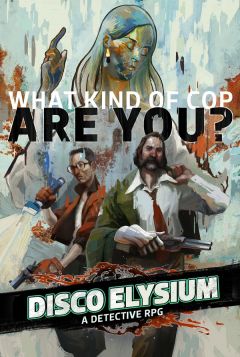
What approach did you take when creating music for the game? What kind of direction did ZA/UM provide? They were a close-knitted bunch of talented artists and writers. Later we would meet other members of the core team like Helen Hindpere. He would also offer helpful advice like how we had the tracklisting wrong on some of our past albums and how they could be improved! He may have had a point. It was very beautiful and showed they were taking a very imaginative angle.įrom then on I would look forward to meetings with Robert who would always surprise us with where he was willing to go artistically. He had some prototype artwork by the very talented Aleksander Rostov. It was clear he believed passionately in what he was creating and had already / was in the process of forming a very interesting team that had an unusual and detailed approach to creating a world rather than just another game. Also, his knowledge of our music was encyclopedic. On first meeting him it was obvious that he had enthusiasm, intelligence and a unique energy in abundance. Jan Wilkinson, Sea Power: We really have Robert to thank for this he sought us out. Nintendo Life: How did you wind up working with developer ZA/UM and Robert Kurvitz on Disco Elysium? To dive a bit deeper into the band’s work with Disco Elysium, we spoke to Sea Power's Yan Wilkinson to delve into how they came to work on the game, how they celebrated their 2020 BAFTA win, and whether they would return for a potential sequel. Currently, the band consists of Jan Wilkinson on vocals, Neil Hamilton Wilkinson on bass guitar, Martin Nobel on guitar, Matthew Wood on drums, Phil Sumner on the keyboard, and Abi Fry on the violin. They have since gone on to release a total of eight studio albums and four soundtrack albums, one of which is, of course, Disco Elysium. Sea Power started creating music in the early ‘00s and released their debut album, The Decline of British Sea Power, in Summer 2003. As such, ZA/UM recruited British alternative rock band ‘Sea Power’ (then known as British Sea Power), utilising the band’s sweeping catalogue to bring the world of Elysium to life. Such a unique premise and setting required a soundtrack that would transport the player to the city of Revachol and present a truly well-realised sense of place. After meeting with his esteemed partner Lieutenant Kim Kitsuragi, the two embark on a grisly homicide case, leading them to explore the city and interrogate its eccentric citizens.ĭisco Elysium is perhaps one of the most unique RPG games to grace the Switch, casting aside combat mechanics for skill checks and dialogue trees, allowing the player to craft their own story and shape the main protagonist in whichever way they see fit. You take on the role of a detective who wakes up in a trashed hotel room with no memory of who he is or what he’s doing in Martinaise.

It’s been a year since Disco Elysium: The Final Cut launched on the Nintendo Switch to rave reviews (including our own, in case you were wondering!), but the game originally launched a couple of years earlier for Windows, on 15th October 2019.ĭesigned by Estonian novelist Robert Kurvitz, Disco Elysium takes place in the poverty-stricken district of Martinaise, nestled within the fictional city of Revachol. This feature is focused entirely on Sea Power's work on Disco Elysium, but if you want more context around the recent news regarding ZA/UM, you can check out our coverage for more details. A quick note before we begin: The following interview was conducted prior to the news that lead designer Robert Kurvitz, artist Aleksander Rostov, and writer Helen Hindpere had all departed from developer ZA/UM, apparently under involuntary circumstances.


 0 kommentar(er)
0 kommentar(er)
